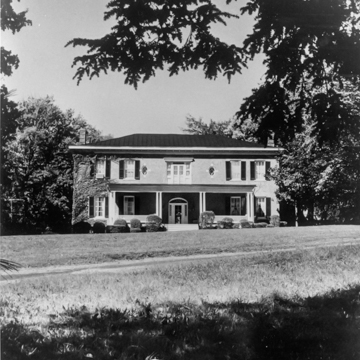You are here
Kappa Alpha Fraternity Headquarters (Mulberry Hill)
Mulberry Hill shows the evolution of a Valley house from a one-story, double-pile core to a two-storied, hipped-roof mansion and is one of the few Virginia houses to have painted bondwork on its facade. The house is also significant for its connection with some of Rockbridge County's most important early leaders. The house rests on a stone foundation that may be part of an older house, perhaps that of William Graham, the first rector of Washington College, who owned the site in the 1790s. He sold it to Andrew Reid in 1797, who built the brick, one-story, four-room, central-hall house that forms the core of the present building. A major landowner and important political leader, Reid was one of the wealthiest men in the county, and the elaborate Georgian detailing of the interior woodwork reflects that. In the 1850s, Reid's son, politician and gentleman-architect Samuel McDowell Reid, added the second floor. This is visible in the change of bondwork from Flemish on the first story to common bond on the second, and in the moldings, which are Federal on the first story and Italianate on the second. In 1903, local architect McDowell raised the roof to its present hip, inserted the corbeled cornice and the two oval windows, and added the present front porch. He was probably responsible for the unusual painted bondwork. The facade was given a red wash and then marked by gray pencil to outline the mortar joints. A black wash for the headers helped to create the illusion of Flemish bond, and a painted jack arch over the door hides the segmental arch. The house has an early-twentieth-century walled, formal garden. Owned now by the Kappa Alpha National Fraternity and used as the organization's headquarters for the entire country, the site is protected by a state easement, which means the house is open to the public at least once a year.
Writing Credits
If SAH Archipedia has been useful to you, please consider supporting it.
SAH Archipedia tells the story of the United States through its buildings, landscapes, and cities. This freely available resource empowers the public with authoritative knowledge that deepens their understanding and appreciation of the built environment. But the Society of Architectural Historians, which created SAH Archipedia with University of Virginia Press, needs your support to maintain the high-caliber research, writing, photography, cartography, editing, design, and programming that make SAH Archipedia a trusted online resource available to all who value the history of place, heritage tourism, and learning.


